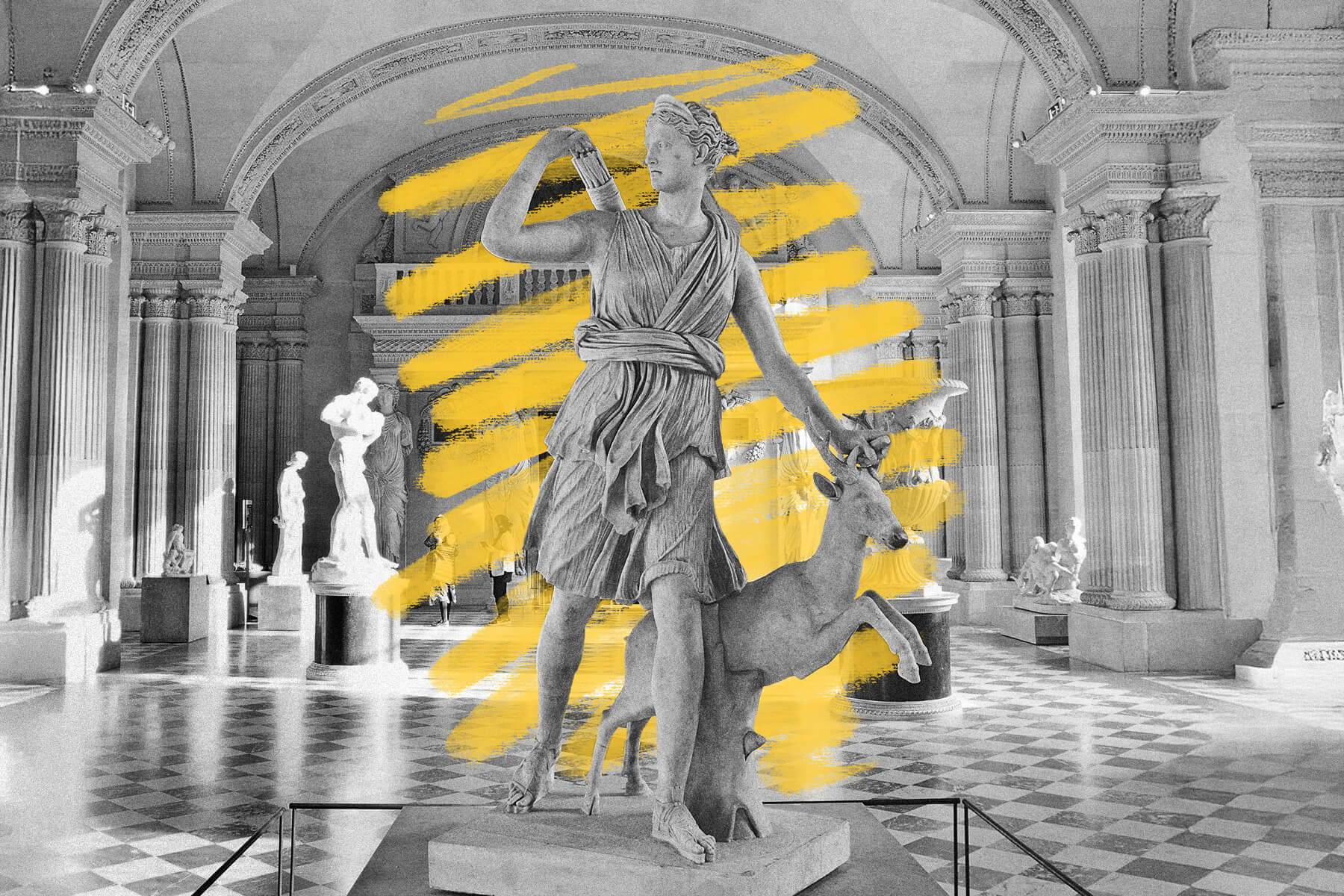Many Greek and Roman statues were originally painted vibrant colors.
Walk through a museum with ancient Greek and Roman artifacts and you’re likely to see the familiar gleam of white marble statues. It’s how our modern eyes have always seen these ancient artifacts, but originally, many of these statues were painted in bright, vivid colors. The decorative practice known as polychromy — meaning “many colors” in Greek — brought statues to life in vibrant detail, with intricately designed robes, lifelike eyes, and detailed jewelry.
Artists didn’t just use paint to produce this effect: Bronze, copper, silver, and gold added shine, while gemstones and colored marbles created textured inlays. Over time, exposure to the elements — along with cleaning and restoration — stripped away most of the color and detail, leaving only faint traces behind. Though archaeologists and art historians have noted traces of pigmentation on excavated Greek and Roman antiquities since the 18th and 19th centuries, it wasn’t until the 1980s that the full, colorful scope of the past began to be understood. German archaeologist Vinzenz Brinkmann led the charge, and today, his detailed analysis and meticulous plaster recreations have helped revive long-obscured details such as the goddess Artemis’ bright floral crown and blond hair.
It was once thought that Greek and Roman sculptors intentionally favored minimalism; the presumed preference for form over decoration was considered the height of classical beauty and influenced contemporary art and culture. While some historians question the accuracy of the research methods and even the colors used in modern reconstructions, the lost hues of antiquity nonetheless reframe long-held beliefs, and remind us that history is often a work in progress.















